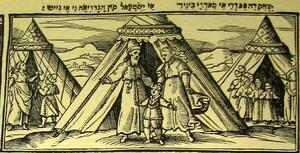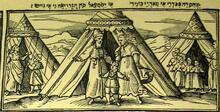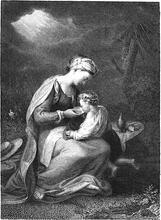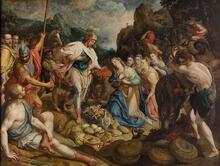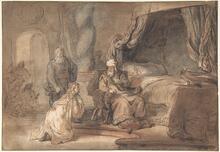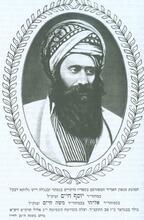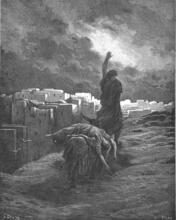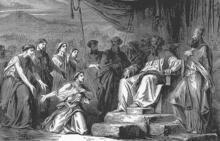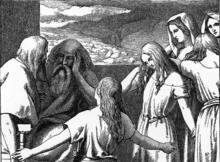Keturah: Bible
Article
The marriage of Abraham (the first major male figure in the ancestor narratives of Genesis) to Keturah represents a secondary union, one that separates the procreation of offspring from the inheritance of immovable property (land), which in this case goes only to Abraham’s primary heir, Isaac—not to Keturah’s six children (Genesis 25:1). From the story, it is impossible to tell whether Keturah’s marriage to Abraham took place while Sarah was still alive; the secondary nature of this marriage would not have required Sarah’s death.
The names Keturah and those of her children probably reflect the region of Arabia, the land from which incense derives.
A close reading of Keturah’s story can be found here.
Meyers, Carol, General Editor. Women in Scripture. New York: 2000.

